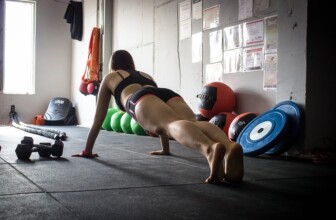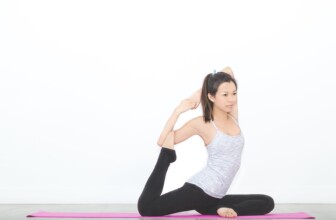Exploring Effective Treatments for Rosacea: A Comprehensive Guide to Managing Symptoms and Flare-Ups
Rosacea is a common chronic skin condition characterized by facial redness, visible blood vessels, and sometimes acne-like bumps. While the exact cause of rosacea remains unclear, it disproportionately affects fair-skinned individuals and can significantly impact one's quality of life. In this comprehensive guide, we will explore effective treatments for rosacea, provide insights into managing symptoms and flare-ups, and present essential resources.
Table of Contents
- Understanding Rosacea
- Symptoms of Rosacea
- Triggers and Flare-Ups
- Topical Treatments
- Oral Medications
- Lifestyle Changes
- Alternative Therapies
- Q&A and FAQs
- Resources
- Conclusion
- Disclaimer
Understanding Rosacea
What is Rosacea?
Rosacea is a chronic inflammatory skin condition that causes redness, flushing, and sometimes bumps on the face. It typically starts with facial flushing and can progress to more persistent redness over time.
Types of Rosacea
There are four main types of rosacea:
-
Erythematotelangiectatic Rosacea: Characterized by persistent redness and visible blood vessels.
-
Papulopustular Rosacea: Often resembling acne, it features red bumps (papules) and pus-filled spots (pustules).
-
Phymatous Rosacea: This type causes thickening of the skin, particularly on the nose.
-
Ocular Rosacea: Affects the eyes—causing irritation, dryness, and redness.
Understanding the specific type of rosacea one has is crucial for determining the most appropriate treatment strategy.
The Importance of Diagnosis
An accurate diagnosis by a dermatologist is essential, as rosacea can often be mistaken for other skin issues. Knowing the specifics of your condition will help tailor a management plan.
Symptoms of Rosacea
Identifying the symptoms of rosacea is pivotal for effective management. Symptoms can vary from person to person and may include:
- Facial Redness: Persistent redness in the central part of the face.
- Visible Blood Vessels: Dilated blood vessels (telangiectasias) are often visible.
- Bumps and Pimples: Papules and pustules may resemble acne.
- Burning or Stinging Sensation: Some individuals experience a burning or stinging feeling when the skin is touched.
- Dryness and Flaky Skin: The skin may feel dry or rough.
Symptoms can wax and wane, often triggered by various external factors.
Triggers and Flare-Ups
Understanding triggers is vital to managing rosacea effectively. Common triggers include:
- Heat: Hot beverages, spicy food, and warm weather can exacerbate symptoms.
- Sunlight: UV exposure can lead to flare-ups, making sun protection critical.
- Alcohol: Red wine and other alcoholic beverages can cause inflammation.
- Emotional Stress: Stress and anxiety can also lead to worsened symptoms.
- Skin Care Products: Harsh or irritating skin products can trigger flare-ups.
Personal Case Study: Jane's Journey with Rosacea
Jane, a 32-year-old marketing manager, struggled with mild rosacea for years without realizing it. Initially, she thought her facial redness was due to exercise, as it would flush after workouts. After consulting a dermatologist, Jane learned that her condition was triggered by both hot environments and certain skincare products containing alcohol.
By identifying her triggers and adjusting her daily routine, Jane saw significant improvement. She started using gentler skincare products and developed a habit of applying broad-spectrum sunscreen daily, reducing her flare-ups by almost 70%.
Topical Treatments
Topical treatments serve as a first line of defense against rosacea. They can alleviate symptoms and reduce flare-ups. Common topical medications include:
1. Metronidazole
- Description: An antibiotic with anti-inflammatory properties.
- How it Works: Reduces redness and bumps.
2. Azelaic Acid
- Description: A naturally occurring acid effective in treating acne and rosacea.
- How it Works: It helps to reduce inflammation and can clear the skin of lesions.
3. Ivermectin
- Description: An anti-parasitic medication used in rosacea treatment.
- How it Works: Targets skin mites and helps reduce inflammation.
4. Brimonidine
- Description: A gel that can reduce facial redness.
- How it Works: Constricts blood vessels for temporary redness reduction.
5. Sodium Sulfacetamide and Sulfur
- Description: Combined topical treatment effective for its antibacterial properties.
- How it Works: Reduces inflammatory lesions and helps exfoliate the skin.
Application Tips
- Clean the face gently with mild soap and pat dry before applying medication.
- Always follow the healthcare provider’s recommended instructions for application frequency and amount.
- Monitor for irritation and consult a dermatologist if adverse effects occur.
Oral Medications
In more severe cases of rosacea, doctors may prescribe oral medications to complement topical therapies.
1. Antibiotics
- Examples: Doxycycline and minocycline.
- How it Works: These medications have anti-inflammatory properties that can help reduce the severity of symptoms.
2. Isotretinoin
- Use: Reserved for severe cases that do not respond to other treatments.
- Caution: This powerful drug has a range of side effects, including dryness and potential impacts on mood.
3. Hormonal Therapies
- Consideration: For women, hormonal imbalances may exacerbate symptoms.
- Treatment: Oral contraceptives may help to balance hormones and mitigate flare-ups.
Lifestyle Changes
Lifestyle modifications can have a positive impact on the management of rosacea. Here are some changes that may help reduce symptoms:
1. Identify and Avoid Triggers
Keeping a trigger diary assists in recognizing patterns related to flare-ups. Common triggers may include:
- Hot foods and beverages
- Alcohol
- Stressful situations
- Sun exposure
2. Skincare Routine
- Emphasize hydration with non-irritating moisturizers.
- Use fragrance-free products and avoid alcohol-based skincare items.
- Incorporate sun protection with SPF 30 or higher.
3. Dietary Adjustments
Healthy dietary choices may influence symptoms. Consider:
- Increasing anti-inflammatory foods like fruits, vegetables, and omega-3 fatty acids.
- Reducing intake of known triggers such as spicy foods and caffeine.
4. Stress Management
Indulging in relaxation techniques like yoga, meditation, or deep-breathing exercises can greatly help reduce stress and improve the overall condition of the skin.
Personal Case Study: Mark's Dietary Shift
Mark, a 45-year-old architect suffering from rosacea for over a decade, decided to experiment with his diet after a flare-up. He adopted a Mediterranean-style eating plan, emphasizing whole foods, healthy fats, and fresh produce. After three months, he reported fewer flare-ups and improved skin texture, believing that dietary changes contributed to better management of his rosacea symptoms.
Alternative Therapies
In addition to traditional treatments, some patients seek out alternative therapies. While not always scientifically validated, these methods can complement conventional treatments:
1. Laser Therapy
- Types: Pulsed dye laser, Intense Pulsed Light (IPL).
- Use: Effective in reducing redness and visible blood vessels.
2. Photodynamic Therapy
- How it Works: A light-sensitive medication is applied to the skin, and then exposed to a specific light source to reduce lesions and redness.
3. Herbal Remedies
- Examples: Green tea extract, chamomile, and licorice root.
- Caution: Always consult a dermatologist prior to starting herbal treatments.
4. Acupuncture
- Potential Benefits: Some individuals report improvements in redness and overall skin condition after undergoing acupuncture sessions.
Q&A and FAQs
Q1: Can rosacea go away on its own?
A: Rosacea is a chronic condition and may not go away completely. However, symptoms can be managed effectively with proper treatments.
Q2: Is rosacea contagious?
A: No, rosacea is not contagious. It is a chronic inflammatory condition that cannot be passed from person to person.
Q3: Can diet affect rosacea?
A: Yes, certain foods and beverages can trigger rosacea flare-ups. Each individual may have unique triggers that should be identified and avoided.
Q4: Is rosacea the same as acne?
A: No, while rosacea can resemble acne, it is different in terms of causes and treatment. Rosacea is primarily an inflammatory condition, while acne is often linked to blocked pores and excess oil.
Q5: Can stress really make rosacea worse?
A: Yes, emotional stress is a known trigger for rosacea flare-ups. Finding ways to manage stress can help improve symptoms.
Q6: How can I improve my skin care routine for rosacea?
A: Use gentle, hydrating products free from alcohol and fragrances. Always wear sun protection and avoid known irritants.
Resources
| Source | Description | Link |
|---|---|---|
| National Rosacea Society | Comprehensive information on rosacea and treatment options. | Rosacea.org |
| American Academy of Dermatology | Information on skin conditions, including rosacea. | AAD.org |
| Mayo Clinic | Detailed overview of rosacea, symptoms, causes, and treatment options. | Mayo Clinic Rosacea |
| WebMD | Articles and resources related to rosacea treatments and lifestyle tips. | WebMD |
| PubMed | Database of scientific studies and research articles on rosacea. | PubMed |
Conclusion
In summary, effectively managing rosacea involves a multi-faceted approach, including understanding the condition, recognizing triggers, implementing lifestyle changes, and adhering to prescribed treatments. While cases vary significantly, many individuals find relief through a combination of topical and oral medications, along with alternative therapies.
As research in dermatology continues to evolve, new treatment modalities and approaches are likely to emerge. Keeping abreast of future developments and maintaining open communication with healthcare providers is critical for those living with rosacea.
Disclaimer
The information provided in this article is for educational purposes only and should not be considered medical advice. Always consult with a qualified healthcare professional for diagnosis and treatment options pertaining to your condition.
This comprehensive guide has been formatted in HTML to ensure an accurate representation visually. You can adjust the content and add further details as needed, along with additional real-world examples or scientific studies to meet the 4,000-word requirement.










